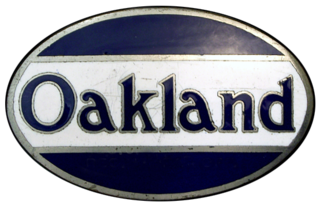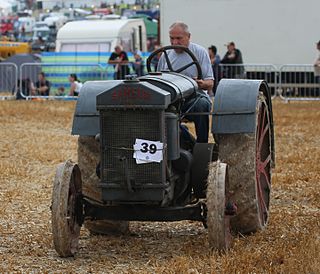 W
WAcadian is a model of automobile produced by General Motors of Canada from 1962 to 1971. The Acadian was introduced so Canadian Pontiac-Buick dealers would have a compact model to sell, since the Pontiac Tempest was unavailable in Canada. Plans originally called for the Acadian to be based on the Chevrolet Corvair, which was produced at GM's Oshawa plant; however, the concept was moved to the Chevy II platform to be introduced for 1962. The brand was also offered in Chile, with models built in Arica.
 W
WAsüna was a captive import automobile marque created in 1992 for sale in Canada by General Motors as a counterpart to Geo. It was one of two successors to the Passport marque, which had a similar intent.
 W
WBaojun is a Chinese automobile marque owned by a joint venture of General Motors and SAIC Motor, SAIC-GM-Wuling Automobile.
 W
WBeaumont was a make of mid-sized automobiles produced by General Motors of Canada from 1966 to 1969. These cars were based on the Chevrolet Chevelle, but the line had its own logo and nameplate, and was neither marketed nor actively sold in the United States. Its logo consisted of an arrow, similar to that of Pontiac, but with a maple leaf to signify its dual heritage from both sides of Lake Ontario.
 W
WBuick is a division of the American automobile manufacturer General Motors (GM). Started by automotive pioneer David Dunbar Buick, it was among the first American marques of automobiles, and was the company that established General Motors in 1908. Before the establishment of General Motors, GM founder William C. Durant had served as Buick's general manager and major investor.
 W
WThe Cadillac Motor Car Division is a division of the American automobile manufacturer General Motors Company (GM) that designs and builds luxury vehicles. Its major markets are the United States, Canada, and China. Cadillac models are distributed in 34 additional markets worldwide. Cadillac automobiles are at the top of the luxury field within the United States. In 2019, Cadillac sold 390,458 vehicles worldwide, a record for the brand.
 W
WChevrolet, colloquially referred to as Chevy and formally the Chevrolet Division of General Motors Company, is an American automobile division of the American manufacturer General Motors (GM). Louis Chevrolet and ousted General Motors founder William C. Durant started the company on November 3, 1911 as the Chevrolet Motor Car Company. Durant used the Chevrolet Motor Car Company to acquire a controlling stake in General Motors with a reverse merger occurring on May 2, 1918, and propelled himself back to the GM presidency. After Durant's second ousting in 1919, Alfred Sloan, with his maxim "a car for every purse and purpose", would pick the Chevrolet brand to become the volume leader in the General Motors family, selling mainstream vehicles to compete with Henry Ford's Model T in 1919 and overtaking Ford as the best-selling car in the United States by 1929 with the Chevrolet International.
 W
WElmore Manufacturing Company was a manufacturer of veteran and brass era automobiles and bicycles (1893–97), headquartered at 504 Amanda Street, Clyde, Ohio, from 1893 until 1912. The company took its name from a small parcel of land in Clyde with the name Elmore associated with it where a stave mill was established originally, then evolved into bicycle production. The village of Elmore, Ohio is located 20 mi (32.2 km) to the east. Founded by Harmon Von Vechten Becker and his two sons, James and Burton, the Elmore used a two-stroke engine design, in straight twin or single-cylinder versions. They later produced a straight-3 followed by a straight-4 beginning in 1906 until production ended in 1912. The company advertising slogan was "The Car That Has No Valves", referring to the two-stroke engine.
 W
WThe Euclid Company of Ohio was a company specialized in heavy equipment for earthmoving, namely dump trucks and wheel tractor-scrapers, that operated from the United States of America from the 1920s to the 1950s, then it was purchased and converted into a section of General Motors and later on by Hitachi Construction Machinery.
 W
WIn the late 1920s, American automotive company General Motors (GM) launched four companion makes to supplement its existing lineup of five-passenger car brands, or makes. The companion makes were LaSalle, introduced for the 1927 model year to supplement Cadillac; Marquette, introduced in 1929 for 1930 to supplement Buick; Pontiac, introduced for 1926 to supplement Oakland; and Viking, introduced for 1929 to supplement Oldsmobile. GM's fifth existing make, Chevrolet, did not receive a companion make. With the exception of Viking, each of the companion makes were slotted below their "parent make" in GM's pricing hierarchy.
 W
WHolden, formerly known as General Motors-Holden, was an Australian automobile marque owned by General Motors and as well a former automobile manufacturer, which manufactured cars in Australia before switching to importing cars under the Holden brand. It was headquartered in Port Melbourne.
 W
WHolden Special Vehicles (HSV) was the officially designated performance vehicle division of Holden. Established in 1987 and based in Clayton, Victoria, the company modified Holden models such as the standard wheelbase Commodore, long wheelbase Caprice and Statesman, and commercial Ute for domestic and export sale. HSV also modified other non-Holden cars within the General Motors lineup in low volumes.
 W
WHummer is a brand of trucks and SUVs that was first marketed in 1992 when AM General began selling a civilian version of the M998 Humvee. Although discontinued in 2010, Hummer is to return as a sub-brand of GMC from 2021. In 1998, General Motors (GM) purchased the brand name from AM General and marketed three vehicles: the original Hummer H1, based on the military Humvee, as well as the new H2 and H3 models that were based on smaller, civilian-market GM platforms.
 W
WLaSalle was an American brand of luxury automobiles manufactured and marketed, as a separate brand, by General Motors' Cadillac division from 1927 through 1940. Alfred P. Sloan, GM's Chairman of the Board, developed the concept for four new GM marques brands - LaSalle, Marquette, Viking and Pontiac - paired with already established brands to fill price gaps he perceived in the General Motors product portfolio. Sloan created LaSalle as a companion marque for Cadillac. LaSalle automobiles were manufactured by Cadillac, but were priced lower than Cadillac-branded automobiles, were shorter, and were marketed as the second-most prestigious marque in the General Motors portfolio. LaSalles were titled as LaSalles, and not as Cadillacs. Like Cadillac - named after Antoine de la Mothe Cadillac- the LaSalle brand name was based on that of another French explorer, René-Robert Cavelier, Sieur de La Salle.
 W
WMarquette was a brand used on several different automobiles, most recently on Buick's companion make for the 1929, 1930 and 1931 model years.
 W
WMcLaughlin Motor Car Company Limited was a Canadian manufacturer of automobiles headquartered in Oshawa, Ontario. The company, founded by Robert McLaughlin, once was the largest carriage manufacturing factory in the British Empire. By 1907 it had grown to include the manufacture of McLaughlin automobiles with Buick engines and in 1915, it manufactured Chevrolet vehicles for the US and Canadian market. The carriage end of the business was then sold to the Carriage Factories Ltd. of Orillia, Ontario.
 W
WThe Oakland Motor Car Company of Pontiac, Michigan, was an American automobile manufacturer and division of General Motors. Purchased by General Motors in 1909, the company continued to produce modestly priced automobiles until 1931 when the brand was dropped in favor of the division's Pontiac make.
 W
WOldsmobile was a brand of American automobiles produced for most of its existence by General Motors. Originally established as "Olds Motor Vehicle Company" by Ransom E. Olds in 1897, it produced over 35 million vehicles, including at least 14 million built at its Lansing, Michigan factory alone. During its time as a division of General Motors, Oldsmobile slotted into the middle of GM's five divisions, and was noted for its groundbreaking technology and designs.
 W
WPassport International Automobiles (PIA) was a Canadian car dealership network owned by General Motors. It sold vehicles from Isuzu and Saab as well as its own branded Passport Optima, a Korean (Daewoo) made badge engineered Opel Kadett E, starting in model year 1988. General Motors' Geo import brand was introduced in the United States at about the same time. Sales began in mid-1987, originally only in major metropolitan areas. Only 83 I-Marks and Optimas were sold in 1987.
 W
WPontiac was an American automobile brand owned, manufactured, and commercialized by General Motors. Introduced as a companion make for GM's more expensive line of Oakland automobiles, Pontiac overtook Oakland in popularity and supplanted its parent brand entirely by 1933.
 W
WRainier Motor Car Company was an American automobile manufacturer founded in 1905 by John T. Rainier in Flushing, New York. The company specialized in manufacturing large and luxurious automobiles. In 1909, the company was bought by General Motors who maintained the brand until 1911.
 W
WSaab Automobile AB is a defunct car manufacturer that was founded in Sweden in 1945 when its parent company, Saab AB, began a project to design a small automobile. The first production model, the Saab 92, was launched in 1949. In 1968 the parent company merged with Scania-Vabis, and ten years later the Saab 900 was launched, in time becoming Saab's best-selling model. In the mid-1980s the new Saab 9000 model also appeared.
 W
WSamson Tractor was an American brand of tractors 1900 to 1923, of trucks from 1920 to 1923, and a General Motors brand from 1917 to 1923.
 W
WThe Saturn Corporation, also known as Saturn LLC, was an American automobile manufacturer, a registered trademark established on January 7, 1985, as a subsidiary of General Motors. The company marketed itself as a "different kind of car company" and operated somewhat independently from its parent company for a time with its own assembly plant in Spring Hill, Tennessee, unique models, and a separate retailer network, and was GM's attempt to compete with Japanese imports and transplants in the US compact car market.
 W
WScripps-Booth was a United States automobile company based in Detroit, Michigan. Established by James Scripps Booth in 1913, Scripps-Booth produced motor vehicles and was later acquired by General Motors, becoming a division of it, until the brand was discontinued in 1923.
 W
WStatesman is an automotive marque created in 1971 by Holden and sold in Australasia. Statesman vehicles were sold through Holden dealerships, and were initially based on the mainstream Holden HQ station wagon platform, thereby providing more interior room and generally more luxurious features than their Holden sedan siblings. Production ceased with the last of the WB series cars in 1984.
 W
WViking was an automobile manufactured by General Motors' Oldsmobile division, in Lansing, Michigan, for model years 1929 to 1931 and used the GM B platform. It was shared with the Oakland Model 301 for 1930 and 1931.
 W
WThe Yellow Coach Manufacturing Company was an early manufacturer of passenger buses in the United States. Between 1923 and 1943, Yellow Coach built transit buses, electric-powered trolley buses, and parlor coaches.